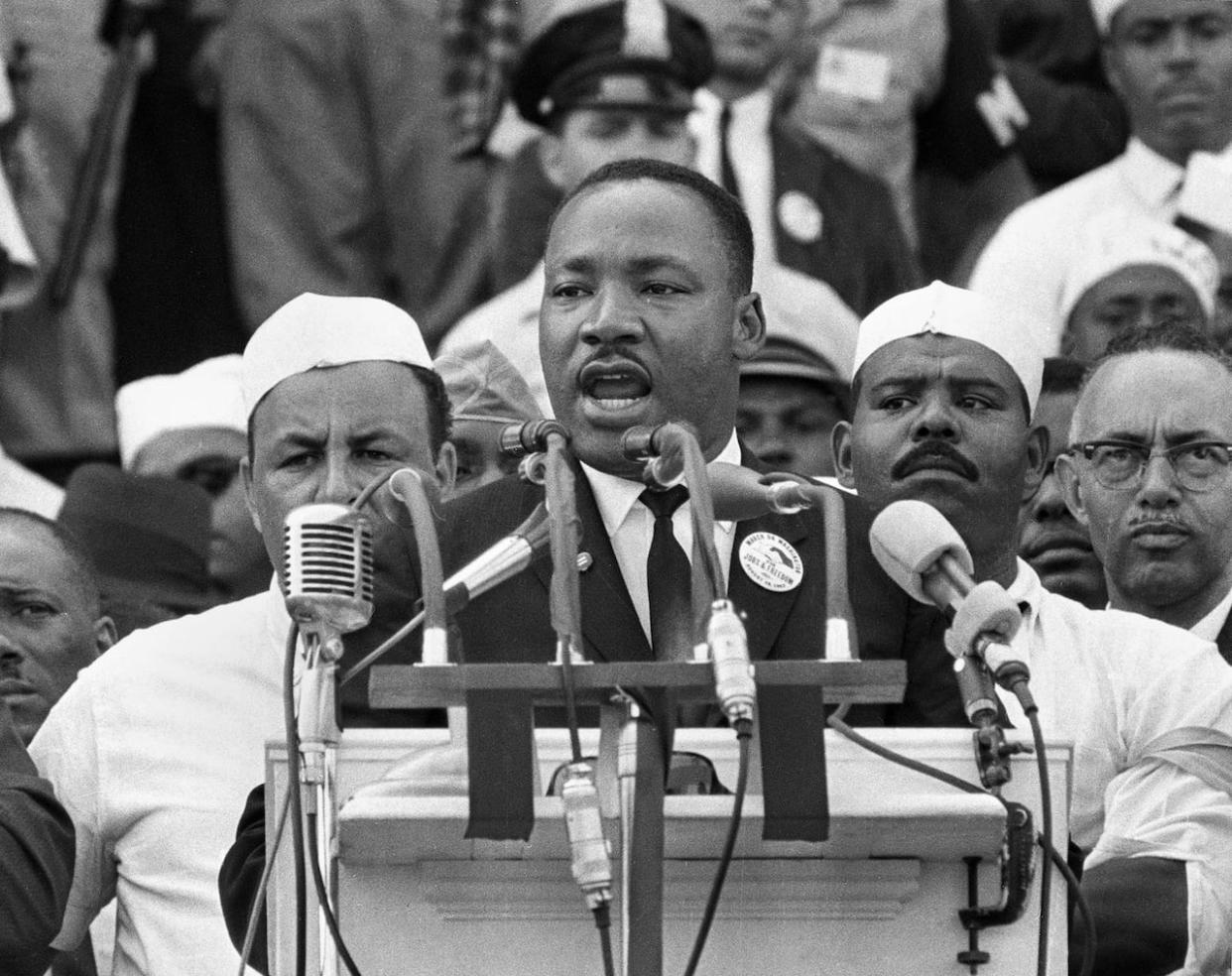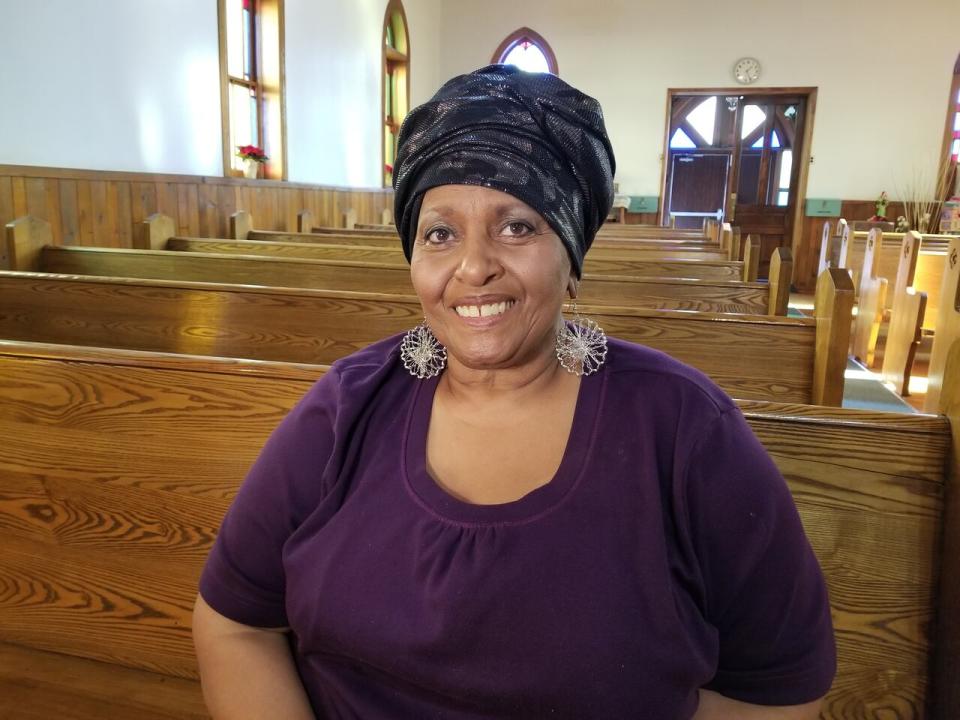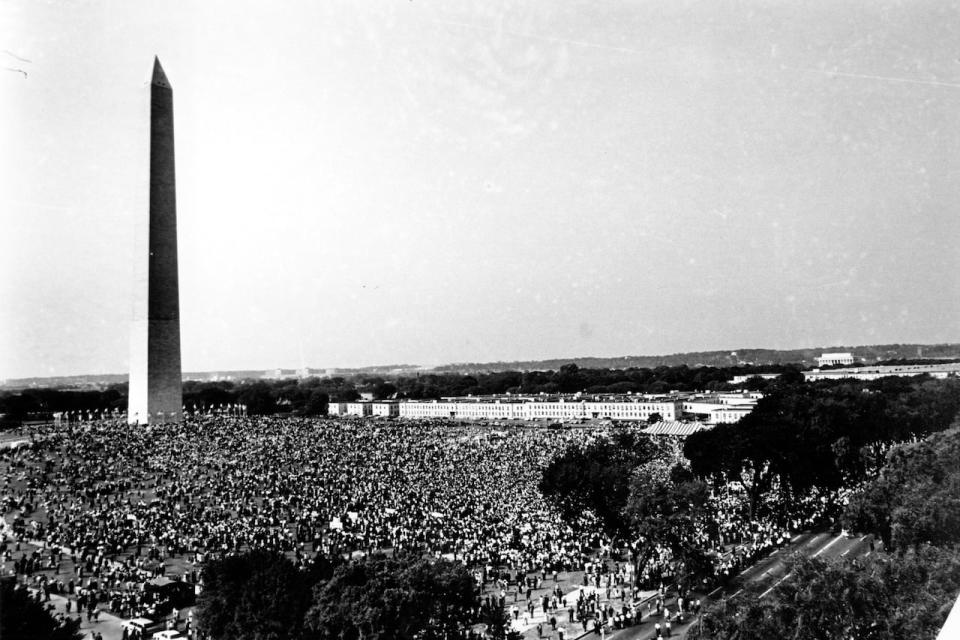Martin Luther King Jr. gave his 'I Have a Dream' speech 60 years ago. This Windsor, Ont., woman was there

Lana Talbot was just 18 when she travelled from Windsor, Ont., to Washington to hear Martin Luther King Jr.'s "I Have a Dream" speech on Aug. 28, 1963. But she almost missed her chance to witness what would become history.
She attended in defiance of her mother, who said she'd let her daughter visit a friend on the promise that she would not attend the March on Washington.
"My mother said ...'You promise you will not go to that march because it's a powder keg.'
"Well, I put my hands behind my back and crossed my fingers and promised. I promised them I wouldn't go. But I went. I went."

Lana Talbot, pictured in a file photo, was 18 when she travelled to Washington, D.C., to hear Martin Luther King Jr. deliver his "I had a Dream" speech. (Tahmina Aziz/CBC)
It's been 60 years since the civil rights leader gave his defining speech on the steps of the Lincoln Memorial in Washington, D.C., during the March on Washington for Jobs and Freedom.
Talbot watched from halfway down the reflecting pool in front of the monument, recalling that King appeared to be just a speck in the distance, though she could hear his famous delivery — and feel the mood in the crowd.
Earlier that same summer, King spoke in Detroit where he gave a version of the famous speech. And years before that, King gave an address in Windsor's Jackson Park for Emancipation Day.
"I could always remember my mother saying how important a man he was going to be," Talbot said.
Talbot attended the March on Washington with friends who wanted to see history in the making.
"This is what [my friend] said to me. 'That's going to be history,'" Talbot recalled. "It just didn't dawn on me at that point in time, but how much of history it really was going to be."
And although Talbot's mother had cautioned her against going, she figured her daughter would be there anyway and watched for her daughter in the crowds on television.

In this Aug. 28, 1963, file photo shows civil rights demonstrators gather at the Washington Monument grounds before noon, before marching to the Lincoln Memorial, seen in the far background at right, where the March on Washington for Jobs and Freedom will end with a speech by Rev. Martin Luther King Jr., now known as the "I Have A Dream" speech. (The Associated Press)
"I just felt I needed to be there," Talbot said. "Do you ever feel that you don't know why you're going to a specific place or do a specific thing, but you do it because you know it's the right thing to do?
"That was me, and I still do."
Being in tune and in the moment key to influential public speaking
Sambath Kumaar is the Windsor-area director for Toastmasters, a popular public speaking group.
Kumaar said he's studied the speech, an incredible example of the power of public speaking. There are a few features that stand out.
Skilled leaders will use public speech to drive people together toward a common goal, something Kumaar says he sees in the "I Have a Dream" speech.
"One thing that I see in Martin Luther King Jr.'s 'I Have a Dream' speech — and in any evocative, influential public speech — is gauging the audience wavelengths," he said. "Once you're in tune with where the audience are, you don't even have to follow your script.
"It is being in the moment, being present and aware of what the audience is expecting and then perfectly delivering those words that will trigger a chain reaction of emotions among the audience."
Considered among the greatest speeches of the 20th century, there were several versions and drafts written at different times, and the version King delivered had elements of many.
Toward the end of the speech King deviated from his prepared remarks to deliver the famous "I have a dream" refrain in the address.
That magic is what Talbot says she remembers, 60 years later.
"I still get the goosebumps on me when I hear that speech, the 'I Have a Dream speech.' You would have to be there to feel … you felt love.
"We felt mercy. You just felt that something was right."
For more stories about the experiences of Black Canadians — from anti-Black racism to success stories within the Black community — check out Being Black in Canada, a CBC project Black Canadians can be proud of. You can read more stories here.

(CBC)
Get the news you need without restrictions. Download our free CBC News App.


